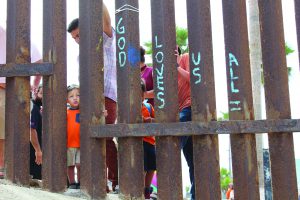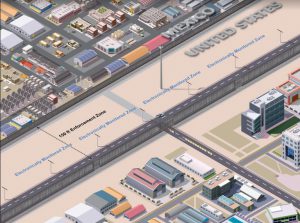Border Wall Prototypes to be Built

Preparations for the construction of prototypes for the border wall, which President Donald Trump often promised to build on the campaign trail, are currently underway.
Construction of these prototypes was announced by Ronald Vitiello, Deputy Commissioner for U.S. Customs and Border Protection (CBP), after months of delays.
The four prototypes are being built with the purpose of testing the use of diverse materials, as well as other construction variants.
Eduardo Olmos, spokesperson for the San Diego CBP office, said that at time a building area prototypes has been designated the San Diego’s Otay Mesa area.
A total of 20 million dollars in funds, divided into individual grants, have been allocated to the four companies building prototypes: Caddell Construction Company of Montgomery, Alabama; Fisher Sand and Gravel Company from Tempe, Arizona; Texas Sterling Construction Company from Houston; and WG Yates & Sons Construction Company from Mississippi.
Meanwhile, activists in San Diego question the project and the benefits it will bring with it.
“It is regrettable that the president continues to insist (on a wall), especially in our region where we have literally have built a bridge over the wall, where it is urgently necessary to invest in modernizing border crossings to speed up traffic, where there is a sewage flow problem along the Tijuana River,” stated Christian Ramirez, human rights director for Alliance San Diego.
“There are urgent needs where we need federal investment, and this president wants to wastefully spend $20 million on a prototype for a wall that is completely unnecessary to build,” Ramirez added.
Other groups in San Diego, such as the American Friends Service Committee, also rejected the border wall project. Members of this group hope that resources allocated to this project are destined instead to revitalizing border zones and improving the economic situation along the area.
Meanwhile, during his press conference in Washington, D.C., Vitiello alluded to the importance of the project to stop a greater number of illegal crossings.
“These prototypes aimed at preventing illegal crossings, will help to refine the design standards and safety requirements and meet the needs of the Border Patrol.” said. Vitiello
The prototypes for the border wall will be 30 feet wide by 30 feet high. Each of the companies is expected to finish their projects in a span of 30 days, as ordered by federal authorities.







